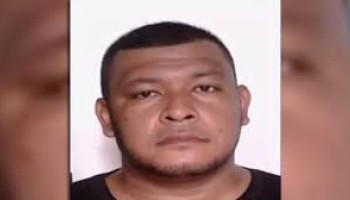Using police data, the human rights watchdog warned that 4,060 cases of forced disappearances were reported between January 2020 and June 2022. The report said that 1,309 of these cases are still active, which means that the whereabouts of the victims remain unknown.
El Salvador’s capital registered the highest number of disappearances from 2019 to 2022 with 430 cases, while La Libertad ranked second with 206.
Although Bukele’s tenure saw the country’s homicide rate drop by about 45%, forced disappearances raise questions about security achievements trumpeted by the president.
“While some lawmakers from another country want us to return to the past of death and destruction that El Salvador lived through…we continue to demonstrate that, without them, we are much better off,” Bukele said, referring to the U.S.
However, forced disappearances in El Salvador are bound to be a major issue in terms of security and human rights.
A missing person “is a permanent pain to the families because forced disappearance ends when the person is found or when his or her remains are found,” director of the Human Rights Institute of Central American University Gabriela Santos said.
Investigators found that on average 2,080 people were reported missing every year in El Salvador from 2019 when Bukele took office until June 2022. The highest rate was seen in 2019 - the year of Bukele’s inauguration - when the country’s disappearance rate reached 43 per 100,000 inhabitants.
Salvadoran police have registered an average of 957 missing persons under Mauricio Funes administration (2009-2014), while in the case of Salvador Sánchez Cerén (2014-2019) the average reached 2,022 per year.
According to the report, forced disappearances have been carried out not only by state agents but mainly by El Salvador’s gangs. This complex phenomenon arose “as a form of violence” in the context of the “post-civil war which lasted until 1992,” it added.
“We also have the problem of impunity, which is another relevant aspect of this crime and these human rights violations,” Santos added. According to the report, “El Salvador does not investigate, does not sanction and therefore does not repair damage either.”
It paves the way for victims to be widely used as a weapon by criminal groups that “exercise their control over territories through terror,” wrote the report.
As the rate of missing persons rose in recent years, officials also found hidden mass graves. Between 2019 and 2022, the Attorney General’s Office spotted 51 hidden graves, in which there would be a total of 158 victims.
The study cited investigator Jeannette Aguilar, who said that these hidden graves reveal “that the forced disappearance in El Salvador is effectively masking murders that seek to be hidden by the attackers.”
Jorge Rodríguez, coordinator of the University Observatory of Human Rights, points to some recommendations that El Salvador should follow. The country must launch a search system for missing persons, include the families and strengthen the processes of receiving and handling complaints concerning missing persons.






